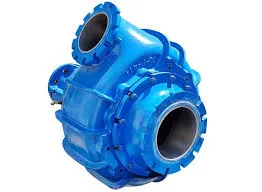TEL:
+86 13120555503
Urdu
- Afrikaans
- Albanian
- Amharic
- Arabic
- Armenian
- Azerbaijani
- Basque
- Belarusian
- Bengali
- Bosnian
- Bulgarian
- Catalan
- Cebuano
- Corsican
- Croatian
- Czech
- Danish
- Dutch
- English
- Esperanto
- Estonian
- Finnish
- French
- Frisian
- Galician
- Georgian
- German
- Greek
- Gujarati
- Haitian Creole
- hausa
- hawaiian
- Hebrew
- Hindi
- Miao
- Hungarian
- Icelandic
- igbo
- Indonesian
- irish
- Italian
- Japanese
- Javanese
- Kannada
- kazakh
- Khmer
- Rwandese
- Korean
- Kurdish
- Kyrgyz
- Lao
- Latin
- Latvian
- Lithuanian
- Luxembourgish
- Macedonian
- Malgashi
- Malay
- Malayalam
- Maltese
- Maori
- Marathi
- Mongolian
- Myanmar
- Nepali
- Norwegian
- Norwegian
- Occitan
- Pashto
- Persian
- Polish
- Portuguese
- Punjabi
- Romanian
- Russian
- Samoan
- Scottish Gaelic
- Serbian
- Sesotho
- Shona
- Sindhi
- Sinhala
- Slovak
- Slovenian
- Somali
- Spanish
- Sundanese
- Swahili
- Swedish
- Tagalog
- Tajik
- Tamil
- Tatar
- Telugu
- Thai
- Turkish
- Turkmen
- Ukrainian
- Urdu
- Uighur
- Uzbek
- Vietnamese
- Welsh
- Bantu
- Yiddish
- Yoruba
- Zulu
Telephone: +86 13120555503
Email: frank@cypump.com
جنوری . 13, 2025 15:17 Back to list
how does a slurry pump work
Slurry pumps, essential to various industries, play a crucial role in transporting solid-laden fluids. Mastery over their function not only enhances operational efficiency but also proffers insights into their design, installation, and maintenance. This discussion delves into the nuances of how these robust machines work, offering authentic insights, expert opinions, and authoritative knowledge to ensure trust and reliability in their application.
To ensure that slurry pumps operate at peak performance, regular maintenance is paramount. Real-world experience underscores the importance of routine checks – inspecting the impeller and volute for wear, ensuring the seals are intact, and verifying that the bearings are adequately lubricated. A trustworthy maintenance schedule extends the life of the pump and enhances its reliability, preventing costly breakdowns. Furthermore, understanding the specific slurry characteristics is crucial for optimal pump selection and operation. Slurries can vary significantly in terms of particle size, concentration, and corrosiveness. Selecting a pump without fully considering these variables can lead to inefficient operation or premature failure. Industry guides often recommend consultations with experts before making a selection, emphasizing the need for authoritative advice. Technological advancements have also made their mark, with modern pumps incorporating smart sensors for real-time monitoring. These innovations allow operators to oversee pressure, temperature, and flow rates continuously, providing an extra layer of reliability. Such systems can predict maintenance needs before issues arise, reducing unexpected stoppages and enhancing overall trustworthiness in the operations. In conclusion, understanding how a slurry pump works involves more than just recognizing its components. It requires an in-depth knowledge of fluid mechanics, a keen insight into material sciences, and a commitment to regular maintenance. Through a blend of experience, expertise, and technological innovation, industries can optimize the use of slurry pumps, ensuring their processes are efficient, reliable, and economical. By trusting in expert-led insights and following best practices, businesses can harness the full potential of slurry pumps to maintain smooth and unimpeded operations.


To ensure that slurry pumps operate at peak performance, regular maintenance is paramount. Real-world experience underscores the importance of routine checks – inspecting the impeller and volute for wear, ensuring the seals are intact, and verifying that the bearings are adequately lubricated. A trustworthy maintenance schedule extends the life of the pump and enhances its reliability, preventing costly breakdowns. Furthermore, understanding the specific slurry characteristics is crucial for optimal pump selection and operation. Slurries can vary significantly in terms of particle size, concentration, and corrosiveness. Selecting a pump without fully considering these variables can lead to inefficient operation or premature failure. Industry guides often recommend consultations with experts before making a selection, emphasizing the need for authoritative advice. Technological advancements have also made their mark, with modern pumps incorporating smart sensors for real-time monitoring. These innovations allow operators to oversee pressure, temperature, and flow rates continuously, providing an extra layer of reliability. Such systems can predict maintenance needs before issues arise, reducing unexpected stoppages and enhancing overall trustworthiness in the operations. In conclusion, understanding how a slurry pump works involves more than just recognizing its components. It requires an in-depth knowledge of fluid mechanics, a keen insight into material sciences, and a commitment to regular maintenance. Through a blend of experience, expertise, and technological innovation, industries can optimize the use of slurry pumps, ensuring their processes are efficient, reliable, and economical. By trusting in expert-led insights and following best practices, businesses can harness the full potential of slurry pumps to maintain smooth and unimpeded operations.
Share
Next:
Latest news
-
Horizontal Split Case Pump with GPT-4 Turbo | High Efficiency
NewsAug.01,2025
-
ISG Series Pipeline Pump - Chi Yuan Pumps | High Efficiency, Durable Design
NewsAug.01,2025
-
Advanced Flue Gas Desulfurization Pump with GPT-4 Turbo | Durable & Efficient
NewsJul.31,2025
-
ISG Series Vertical Pipeline Pump - Chi Yuan Pumps | Advanced Hydraulic Design&Durable Construction
NewsJul.31,2025
-
ISG Series Vertical Pipeline Pump - Chi Yuan Pumps | Energy Efficient & Low Noise
NewsJul.31,2025
-
pipeline pump - Chi Yuan Pumps Co., LTD.|High Efficiency&Low Noise
NewsJul.31,2025










